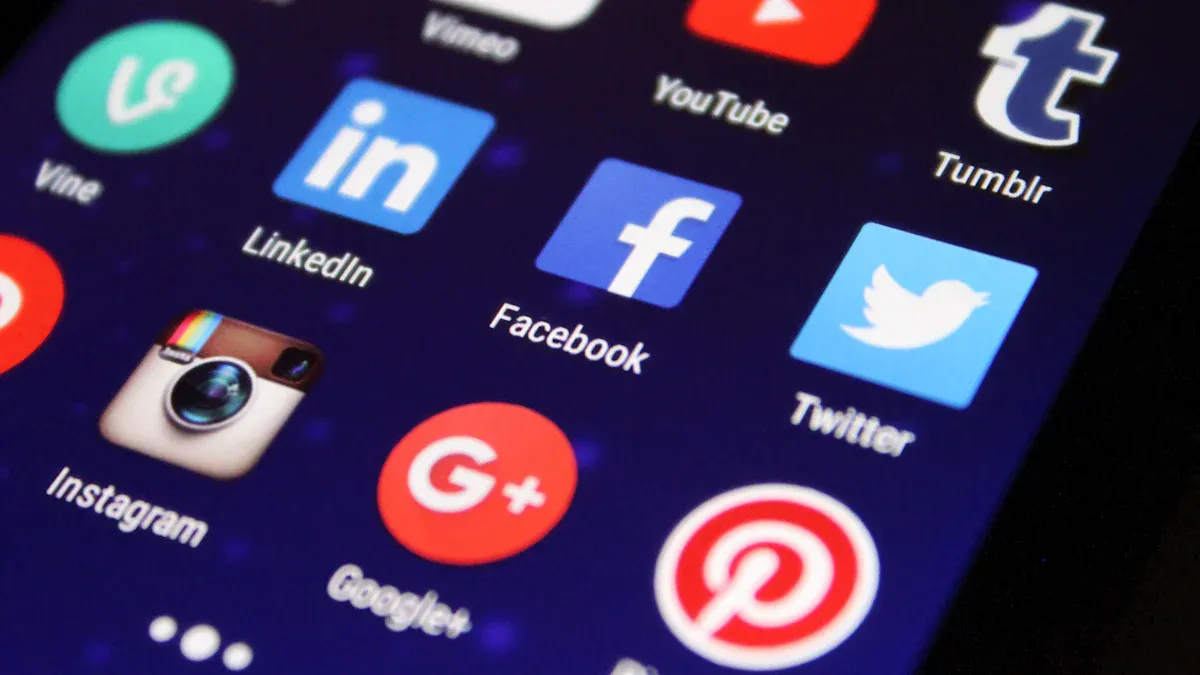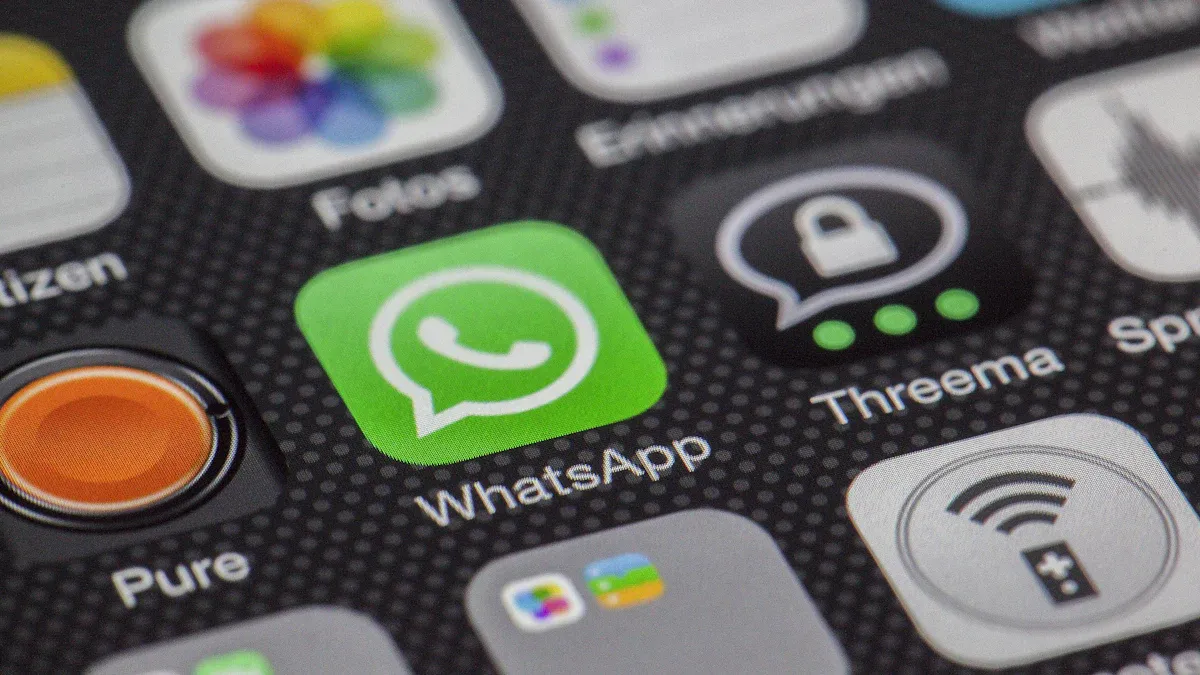
You can manage remote ad content updates across many platforms by using systems that centralize everything in one place. Cloud-based tools enable you to update ads from anywhere, saving time and ensuring your message remains consistent everywhere. Centralized management speeds up your workflow by combining planning, creative work, and analytics. This approach prevents duplicated efforts and reduces confusion among team members. Automation tools allow you to schedule remote ad content updates and monitor them easily, helping you reach your audience quickly while maintaining a strong brand presence.
Key Takeaways
Use cloud-based tools to change ads from anywhere. This helps you update ads fast and in the same way on all platforms.
Pick advertising platforms that fit your campaign goals and audience. This helps you get better results and spend less money.
Plan your ad updates by making content and setting times to post. Use automation to check and confirm changes.
Keep your brand message the same on every platform. Follow clear rules and use shared tools to work as a team.
Watch your ads often with analytics. Fix problems quickly to make ads work better and keep your brand safe.
Identify Platforms

Major Channels
When you want to update ad content from far away, you must know where your ads will show up. Many companies use social media, search, display, and digital video platforms together. Each channel has special ad types and reaches different groups of people. Here is a table that helps you see the most popular advertising platforms:
Platform | Target Audience | Ad Type |
|---|---|---|
Google Ads | Broad, intent-driven | Search, Display |
Facebook Ads | B2C, social media users | Photo, Video, Carousel |
Instagram Ads | Visual-centric, millennials | Stories, IGTV, Reels |
YouTube Ads | Video enthusiasts | Skippable, Non-Skippable |
LinkedIn Ads | B2B professionals | Sponsored Content, InMail |
Pinterest Ads | DIY, lifestyle | Promoted Pins |
Twitter Ads | Real-time info seekers | Promoted Tweets, Trends |
Note: Since 2019, many families stopped using cable and switched to streaming and connected TV. In 2024, more people watched connected TV than regular TV. This shows that CTV platforms are now very important for updating ad content from far away. You can now reach more people on digital video and CTV channels than before.
Platform Relevance
Pick platforms that fit your campaign goals and audience. First, set clear goals like brand awareness, getting leads, or making sales. Then, check important numbers like cost per lead, cost per acquisition, and return on ad spend. These numbers tell you how well each platform matches your goals and budget.
Criteria / Metric | Description | Why It Matters |
|---|---|---|
Campaign Goals | What you want to achieve | Aligns platform with your needs |
CPM, CTR, Conversion Rate | Cost and engagement numbers | Shows platform effectiveness |
ROAS, CPL, CPA | Profit and cost per action | Measures cost efficiency |
Budget Allocation & Analytics | How you manage and track spending | Helps optimize your strategy |
Social media platforms have ad types that look like normal posts, so people interact with them more.
Display and digital video ads let people click or watch, but some may not see them because of ad blockers.
Programmatic demand is high on platforms that use automated buying, so it is easier to update and target ads from far away.
You should also think about programmatic demand when picking platforms, because it helps you grow and improve your campaigns faster.
By matching your goals and numbers with the right channels, you can use your ad types well and reach your audience easily.
Centralized Tools

Remote Ad Content Updates
It is easier to update ads from far away with one main platform. Tools like Google Ad Manager, AdRoll, and Samsung VXT help you control ads in one spot. Dameware Remote Support is also a good tool. It lets you change ads, manage users, and set group rules without logging into each server. These platforms give you one dashboard to see all your ad campaigns and make fast changes.
Many top ad management platforms use a single SDK. This SDK links to many ad networks, so you do not need lots of tools. You can change ad settings, switch network order, and fix problems without updating your whole app. Real-time optimization helps you choose the best ads for your viewers. Central dashboards show how your ads are doing, so you can make your campaigns better.
Tip: Try using automation and scheduling to plan ad updates early. This saves time and keeps your ads new.
Update Devices Remotely
Cloud-based tools let you update and manage many devices from anywhere. With these tools, you can finish device updates, send new ads, and check device status without being there. Platforms like Microsoft Autopilot and JumpCloud help you set up, update, and protect devices as soon as they go online. You can send updates, add apps, and set security rules from far away.
A good tool gives you a control panel for all your screens and devices. You can upload new ads, pick when they show, and set rules for each place. Automated patching and real-time content management keep your ads working well. Device updates happen in the background, so people always see the newest ads.
Note: Always use strong security, like multifactor authentication and role-based access, to keep your remote ad updates safe.
Step-by-Step Process
When you update ad content from far away, it helps to have a clear plan. You can split the process into three steps. First, get your content ready. Next, set up when your updates will happen. Last, check that everything works. These steps help you keep your ads neat and working well.
Prepare Content
You need to plan before you change any ads. Here are some steps to help you get ready:
Get your ideas approved. Make sure your plan, budget, and team are set. Get your boss to say yes.
Find the right people for the job. Bring in creative workers who know what you need and follow the rules.
Set up how you will work. Use a shared cloud tool and make sure everyone knows their job.
Make your content fit each platform. Check things like keywords, ALT text, and how fast pages load.
Test your ads on different devices. Make sure they look good on phones and computers. Your ads should match each platform’s style.
Get your content ready to share. Add buttons for sharing, use the right calls to action, and prepare for other channels.
Tip: Change your content for each platform. A video ad for YouTube is not the same as a Facebook carousel ad. This step helps you make a package that works everywhere.
You can use special tools to help with these jobs. Here is a table with some popular choices:
Tool | Key Features | Pros | Cons | Pricing Highlights |
|---|---|---|---|---|
Kintone | Custom workflows, reminders, mobile & desktop apps, permission settings | Easy customization, good mobile app, strong record-keeping | Desktop UI less intuitive, extra cost for integrations | $15-$24/user/month |
Nintex | Automation, process mapping, collaborative task management | User-friendly, free templates, easy document sharing | High pricing | From $910/month |
Bynder | Digital asset management, AI, content creation to distribution workflow | Centralizes media, easy onboarding, simple UI | Steep learning curve, unclear pricing | On request |
Bit.ai | Document management, real-time collaboration, AI writing assistant | Strong security, wide integrations | Access control issues, can be expensive | Free to $15/user/month |
Airtable | Database management, workflow automation, integration, survey and form capabilities | Many templates, strong integration, notification system | N/A | N/A |
Pipedrive | Workflow automation, communication tracking, sales pipeline visualization | Easy data import, customizable dashboards | Best for SMBs, limited enterprise integration | From $12.50/user/month |
Schedule Updates
After your content is ready, you need to plan when to update. Here are some tips to help you:
Post ads when your audience is most active. This helps more people see them.
Split your audience by time zone if you have a global campaign. Match your ad times to each group.
Pick times that fit how people act online. For example, remote work can change when people are online.
Match your ad times with sales, events, or seasons. This helps you reach people when they care most.
Try A/B testing to find the best times for your ads.
Use tools that schedule ads and show you data right away. These tools help you change plans fast.
Think about culture and what your competitors do. Look for times when your ads can stand out.
Change your plan for different groups. B2B ads work best during work hours. B2C ads do better on weekends or nights.
Watch your costs. Check how much you pay for clicks or views to save money.
Use data to pick the best times for your ads. This helps you reach people when they are most likely to notice.
Note: Automation tools can do a lot of the scheduling for you. They help you post ads at the best times without extra work.
Confirm Changes
After you plan your updates, you need to make sure they work. Automation can help you avoid mistakes and save time. Here is how you can check your updates:
Set up automatic rules in your ad platform. These rules help your ads go live on their own.
Make your rules with details like date, status, or device type.
Have your rules check for updates many times each day. This makes sure your ads go up fast.
Turn on updates after each rule runs. Your ads will go to the right groups and devices.
Use settings to pick the update type, deadline, and when devices wake up.
Watch for problems and check reports. Set the right level of detail to catch issues early.
Try no-code or low-code tools to help with updates. These tools make it easier to talk to your team and spot errors.
Tip: Always watch your updates with real-time dashboards. This helps you find problems fast and keep your ads running well.
If you follow these steps, you can update your ads from anywhere. Your message will stay the same, you will reach people at the right time, and you will make fewer mistakes.
Consistency & Compliance
Brand Cohesion
You need to keep your brand message the same on every platform. This helps people trust your business and remember your ads. Start by making clear branding guidelines. These should cover your logo, colors, fonts, and the way you talk to your audience. Share these rules with everyone on your team.
Use project management tools like Trello or Monday.com to organize your branding projects. These tools help you track tasks and make sure everyone follows the same plan.
Store your brand images, videos, and ad formats in one place using asset management systems such as Bynder or Brandfolder. This makes it easy for your team to find and use the right files.
Communicate often with your team using Slack or Microsoft Teams. Quick messages and video calls help everyone stay updated and avoid mistakes.
Hold regular meetings to check if your ads match your brand style. Give feedback and fix any problems right away.
Train your team with online courses so they know how to use your brand’s voice and style in every ad, including shoppable ads and interactive ads.
Tip: Look at brands like Apple and Nike. They use the same design and message everywhere, from their websites to their shoppable ads.
Platform Guidelines
Every platform has its own rules for ads. You must follow these rules to keep your ads running and avoid problems.
Never use empty ads or test banners in your campaigns.
Only show ads in the main part of your app, not in widgets or extensions.
Make sure your ads fit the age rating of your app or website.
Let users see why they get certain ads without leaving your app.
Do not use sensitive data, like health or children’s info, for targeting.
Always label interstitial ads clearly and give users a way to close them.
Allow users to report ads that are not right for their age.
Platform | Key Rule Example |
|---|---|
No misleading content, clear call-to-action | |
Use approved ad formats, follow image rules | |
YouTube | Mark sponsored content, avoid clickbait |
CTV Platforms | Shoppable ads must meet privacy standards |
You also need to protect user data. Set up strong access rules and use encryption to keep information safe. Train your team to follow privacy laws like GDPR and CCPA. Check your systems often for security risks. Give users control over their data and explain how you use it in simple words.
Note: Using collaboration tools like Trello or Confluence helps your team work together, even if you all work from different places.
Monitor & Optimize
Analytics
You have to check how your ads do after updates. Analytics tools help you see what is working and what is not. You can use Google Analytics 4, Mixpanel, or Tableau to watch ad results live. These tools show numbers like how many people see your ads. They also show how many click and finish watching videos. Look at view-through rates, impressions, reach, and engagement too. These numbers tell you if your remote updates help more people see your ads and get better results.
Analytics Tool Type | Example Tools | Key Features for Remote Ad Tracking |
|---|---|---|
Attribution Tools | HockeyStack | Multi-touch attribution, real-time insights |
CRM Analytics Tools | HubSpot | Customer data, sales funnel tracking |
Social Media Analytics Tools | Sprout Social | Social engagement, real-time monitoring |
Business Intelligence Tools | Tableau | Custom reports, data visualization |
Marketing Automation Tools | Marketo | Campaign tracking, automation |
Tip: Choose tools that show all your ad data in one spot. This helps you make fast changes and improve your ads.
Troubleshooting
Sometimes, ads do not show up right or reach the wrong people. You need to check for problems often. Look for errors in your ad dashboards. Make sure your updates went live on every platform. If you see low numbers or missing data, check your settings and try again. Use alerts to catch problems early. Fixing issues fast keeps your ads working and your brand strong.
Connected TV Advertising
Connected tv advertising has special problems. Many streaming services and devices use different rules for ads. You may see different numbers for the same ad on each platform. Some platforms do not share all their data, so you get less information about your viewers. You also need to watch for ad fraud, like fake views or fake devices. Use tools that help find these problems and follow industry rules to keep your ads safe.
CTV Advertising
CTV advertising needs careful watching. You should check video completion rates, household reach, and how often people see your ads. Try to keep ad frequency between 6 and 10 times per viewer. Use programmatic buying to automate ad placements, but always check the results. Change your ad creatives to keep them new. Match your ads to the shows people watch for better results. CTV advertising works best when you use it with other channels, so your message stays strong everywhere. Always update your plan as you learn from your data.
You can make updating ads from far away easier with special tools. These tools put everything in one place and use automation and analytics. They help you save time and make fewer mistakes. Your brand message stays the same everywhere.
Automation lets you spend more time on creative ideas. It also helps you save money, sometimes by 60%.
Analytics show you how your ads are doing right now. You can use this information to make your ads better.
Some tools use AI and fast computer chips to make updates quick and smart.
Keep learning by taking online classes and using new content systems. This helps you get better at managing ads from anywhere.
FAQ
How do you update ads on many platforms at once?
You use a centralized tool. This tool lets you change your ad in one place. The tool then sends the update to all your platforms. You save time and keep your message the same everywhere.
What tools help you manage remote ad updates?
You can try Google Ad Manager, AdRoll, or Samsung VXT. These tools let you control ads from anywhere. They also help you schedule updates and track results. Some tools even use automation to make your work easier.
How do you keep your ads safe when updating remotely?
You set strong passwords and use two-factor authentication. You also give team members only the access they need. Always check for updates and use secure networks. This keeps your ads and data safe.
Can you schedule ad updates for different time zones?
Yes, you can. Most ad platforms let you pick the time and date for each update. You can set different times for each region. This helps you reach people when they are most active.
What should you do if an ad update does not show up?
First, check your dashboard for errors. Make sure you saved your changes. If you still see problems, contact support or check the platform’s help center. Quick action helps you fix issues fast.
See Also
Easy Methods To Stream YouTube Through Apple CarPlay
Troubleshooting Guide For YouTube Issues On Apple CarPlay
Latest Developments Influencing Android Auto Wireless Adapters
Helpful Apple CarPlay Wireless Adapter Advice For Jaguar Owners
